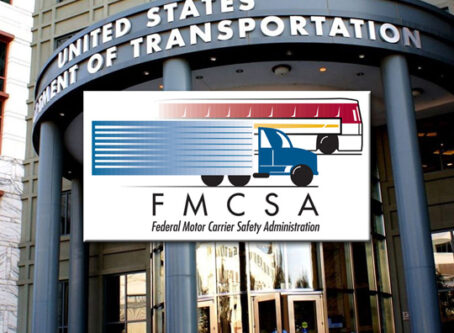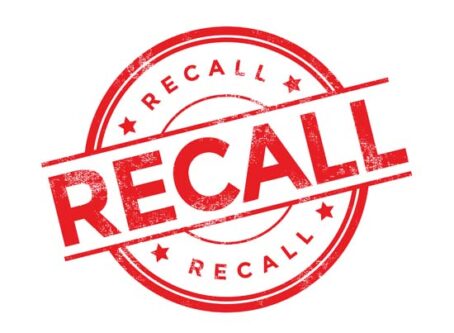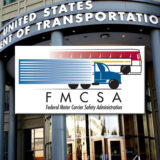CDL training enrollment sees spike ahead of new entry-level training
With entry-level driver training requirements for new commercial driver’s license applicants on the horizon, some schools are seeming an uptick in applicants ahead of to the new regulations set forth by the Federal Motor Carriers Safety Administration.
The regulations consist of three modules: theory instruction, behind-the-wheel range driving, and behind-the-wheel public road driving. Training covers around 30 subjects, and students must show proficiency and score at least 80% on the assessment. The new regulations – which were approved in 2016 – will go into effect on Feb. 7.
After that date, anyone seeking a new CDL, as well anyone as upgrading from a Class B to A or adding a hazmat endorsement, will be subject to entry-level driver training regulations. For those not looking to clear those hurdles, the impending deadline looms large.
“We’re seeing a slight increase in enrollment, but a giant increase in calls,” said Austin Clement, operations manager for Clement Truck Driving Academy, in Lebanon, Mo.
Clement says they’ve been turning drivers away who are looking to sneak in before the deadline.
“Our training standards have always been on par with the mandates, so it’s nothing new for us,” Clement said. “These drivers are wanting a one-day test, and that’s not what we’re about.”
Not all CDL training school are seeing an increase in enrollment. Jeff Steinberg, owner of Apex CDL Institute in Kansas City, Kan., said that while their numbers are down at the moment – mostly due to COVID issues – 2021 was one of their strongest years to date.
While Steinberg welcomes the entry-level driver training regulations, he says there’s still a ways to go when it comes to fine-tuning them.
“I’m not a fan of ELDT as it is currently written. I firmly believe an ELDT requirement was needed, just not in its current form,” Steinberg said. “Through the negotiated rulemaking process, FMCSA allowed the rule to be twisted by special interest. Now it’s just a big complicated mess.”
Negotiated rulemaking
OOIDA Board Member Bryan Spoon – who served on the Negotiated Rulemaking Entry-Level Driver Training Advisory Committee – contends that what they presented to the FMCSA was different than the regulations that will roll out in February.
“The negotiated rulemaking didn’t twist anything as the result of special interest. It was very straightforward and direct coming out of committee,” Spoon said. “We even had actual behind-the-wheel required training hours. FMCSA is the one who started deleting and twisting what the committee hammered out.”
With the rollout of the entry-level driver training regulations, prospective drivers will be required to complete training from a school listed on the Training Provider Registry. Some smaller schools fear they may be forced out of business if they are not listed as a viable training provider.
Steve Henry, owner of American CDL Training in St. Joseph, Mo., says he has seen an increase in enrollment ahead of the February rollout. However, Henry is not in favor of the new mandates and fears they may be the end of his company.
“It’ll probably put me out of business,” Henry said. “A lot more paperwork for me. It’s just going to be a lot more work.”
According to their website, Henry’s company claims to provide potential drivers “high quality training that will enable you to obtain your CDL within 24 hours.” Business models like this essentially will be eliminated by the new mandate.
Nobody wants to see small businesses fail. However, Spoon says that embracing higher standards for CDL training seems like an easy concept to get behind.
“The registry is easy to sign up and everyone is listed on it when it becomes active. Yes, there will be more paperwork and more responsibility and accountability on CDL schools. That’s a good thing,” Spoon said. “If you can’t keep records then maybe you shouldn’t be running a school.”
While the entry-level driver training regulations may hinder training centers like Henry’s, some larger training providers are expanding to keep up with the demand for more classes. President of Roadmaster Drivers Schools Brad Ball told WTSP news that they plan to open seven additional schools by the end of the year.
“A couple years ago we had 13 schools, and we have 20 schools today. We expect to have 27 schools by the end of the year. So, we’re doing our best to grow in the areas that need us most,” Ball said.
The new entry-level driver training regulations are rolling out at a time when safety and training of drivers is a hot topic. Proponents of the new regulations hope they will lead to training centers being more concerned with putting safe drivers on the road.
“If you are a school and you reject higher standards or better training when it comes to ELDT students, then maybe you ask yourself ‘am I here to truly train better drivers or do you just like taking to money and pumping out mediocre and subpar drivers as fast as you can,’” Spoon said. LL









